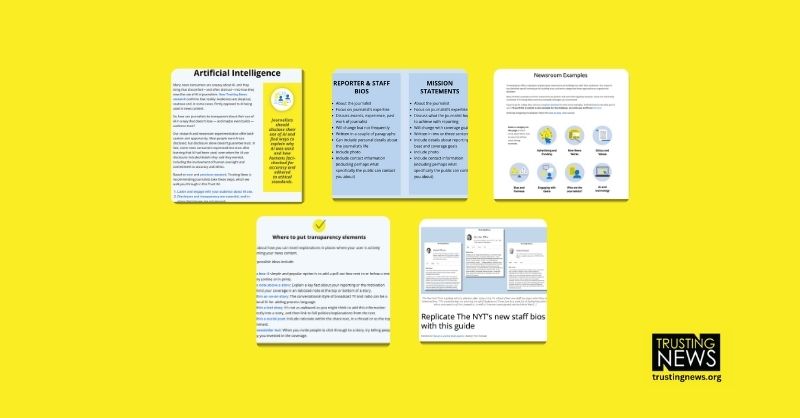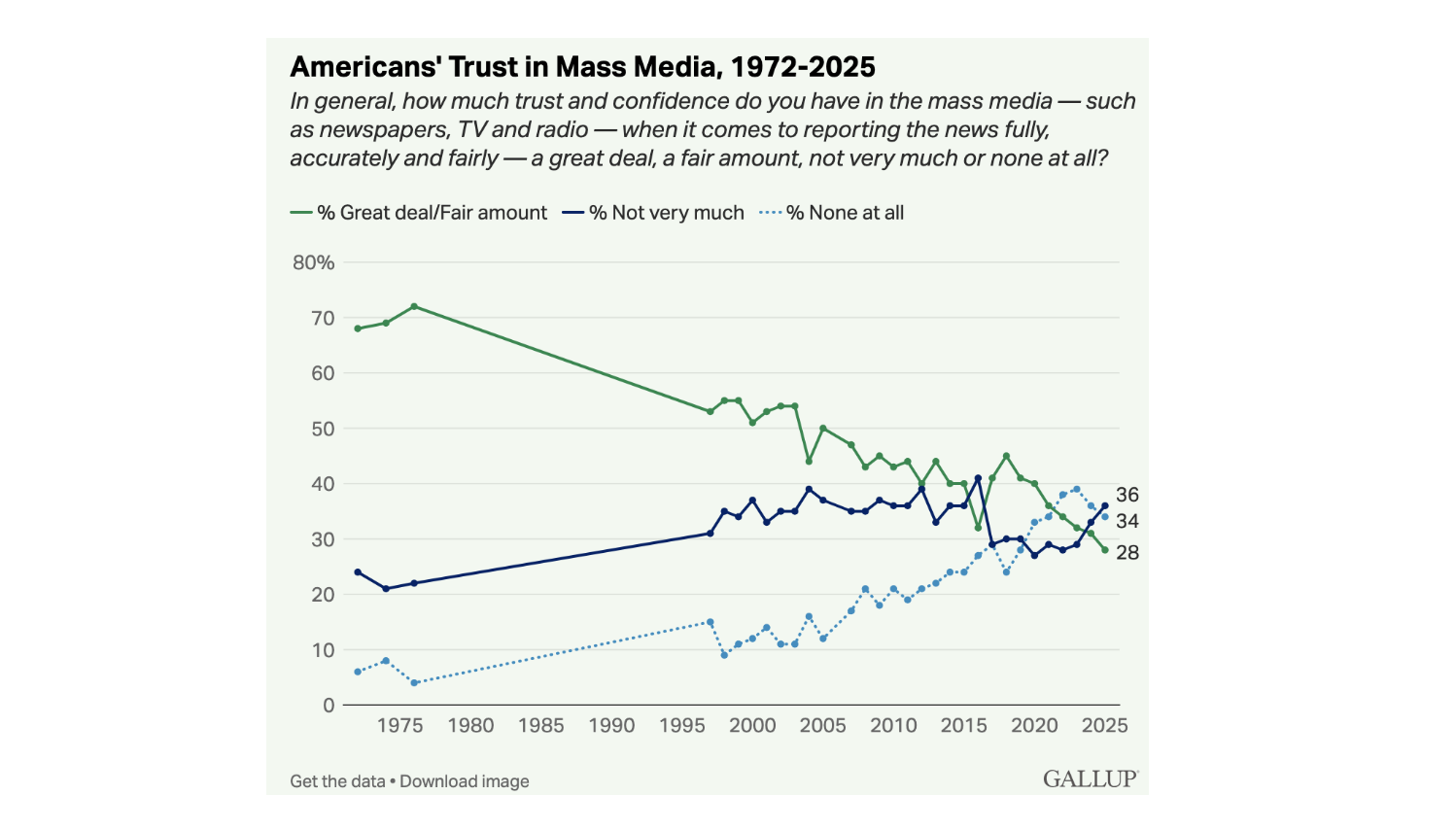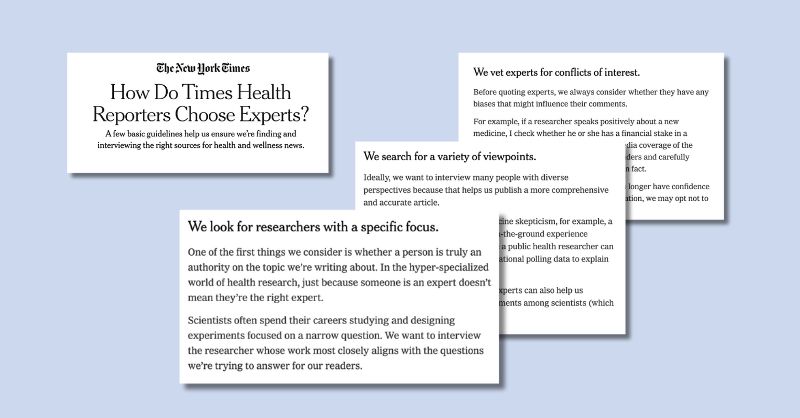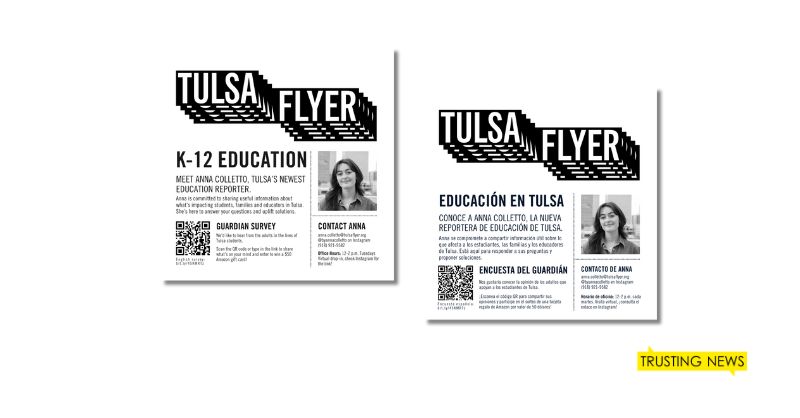This post was written by Newsroom partner Jennifer Hefty. Most of us have heard the chorus. You know the one I’m talking about. “How could this article be so biased?” “How could they get x, y, and z so wrong?” “Why are these reporters insisting on dividing us instead of bringing us together?” “Clearly, these […]
If you let your readers in on your process, they might just surprise you
This post was written by Newsroom partner Jennifer Hefty.
Most of us have heard the chorus. You know the one I’m talking about.
“How could this article be so biased?”
“How could they get x, y, and z so wrong?”
“Why are these reporters insisting on dividing us instead of bringing us together?”
“Clearly, these journalists are out to get (him, her, me).”
And while most journalists know and understand the ethics and process that go into reporting (and editing) a story, most outside the news industry do not.
If we don’t explain these processes, checks and balances, and ethical principles, why should we expect anyone to blindly trust our work? And even more so, why should we expect anyone to want to support it financially?
The answer is we shouldn’t. So, at the Fort Collins Coloradoan, we have been investing in explaining our decisions and news process to our audience in a series of columns and companion stories. These explainers are helping us more quickly answer questions and comments on social media, which is helping us build stronger relationships with our users. And they’re also leading to more paying subscribers.
Explaining your process has a direct correlation to reader revenue. Work it into your audience funnel.
When I think about our audience at the Coloradoan, I think of it in three distinct pieces of a funnel.
- At the bottom of the funnel, we have our loyalists: These readers are subscribers. They know us. They value our work. They pay for it. We have a solid relationship and have built up trust.
- In the middle of the funnel, we have an opportunity: While readers in this funnel may not subscribe yet, they’re aware of who we are and what we do. They’re starting to have brand affinity. They understand some of the ins and outs of our process and trust us enough to keep coming back.
- At the top of the funnel, the largest group, we have our new acquaintances: These readers have landed on our stories from social media or search or maybe have come back once or twice before. It’s too soon for them to make a financial commitment, and they don’t trust us any more than the next news source.
In the newsroom, we can work to target these different segments of the audience to help move them along the funnel. The key to doing so is by building an authentic relationship with these readers and letting them in on our process at every chance we get.
What does this look like in practice?
Start building a library of columns explaining your values, your ethical principles and your processes. Link to these any chance you get in related content. Make them public and prominent on your website.
Share them on social. Be social in the comments. Be unapologetic about your mission but empathetic to concern and constructive criticism. Answer questions.
At the Coloradoan, we began this process in 2019. At first, we wanted to create a library of explainers that was easy for our reporters to access. Then we decided to make the library public for everyone to view in a new section of our website called “Trusting News.”

To start the process, another one of my fellow editors and I went back to long-standing post-it note where we had been adding columns we wanted to write. We started the note a few years prior, and admittedly let it get buried in the cadence of the news cycle. Then we gathered together all the editors in a room to brainstorm and prioritize what explainers we wanted to tackle — knowing this list would ebb and flow as coverage and situations changed.
The initial list wasn’t small:
- Our newsroom’s principles of ethical conduct
- Our corrections and clarifications policy, including a list of all the corrections we have issued
- Our mission statement
- Our ownership, what it means for local coverage and why we share national coverage from our partners
- Our policies for using (and not using) unnamed sources
- Our branded content (native advertising) policies
- Our ethical principles for photojournalism
- What do “on the record,” “off the record” and “on background” mean?
- How we report on crime and courts
- Why readers won’t get free access to our stories on social media
- Our policies for ethically reporting on suicide
- How we moderate comments on all our platforms
- What’s the difference between a news story, an editorial or an opinion. How do I know what I’m reading?
We then figured out who was best to write each one, if it made more sense to update pieces we already had written, or if localizing and publishing guidance from our parent company made sense. Next, we assigned staggered deadlines a few months out.
As you can see by what’s linked above, we haven’t yet made it through our initial list.
We’ve found that writing each piece takes only about an hour. But as I’m sure many of you know, finding that hour can at times prove difficult.
Some of our efforts have been thwarted by staffing changes, some needed to be placed on hold as our parent company merged and we found new footing, and some have been delayed by the cadence of covering breaking news with a small team.
While we didn’t meet our initial deadlines, we are still chipping away at this list. And for every initial idea we haven’t yet finished, we’ve written another explainer that was more timely — related to current coverage or events:
- The Coloradoan will work through furloughs to bring you the news
- For as long as it takes, the Coloradoan is here through pandemic
- How to contact us during the coronavirus pandemic
- Why we published a database of university salaries
- Why we won’t be voting in the primary election
- Coloradoan subscribers will have exclusive access to more of our original reporting
- Our coverage plans and priorities for 2020
The goal was never to have this library completed and left untouched. It was always intended to be a living, breathing look at our process — one that changes and grows over time. And now, more than ever, we are committed to completing our initial list and so many more.
Success is found in building connections
Our data has shown that these explainer stories have some of the highest conversion rates — meaning explaining our process has a direct correlation to reader revenue and increased digital subscriptions.
Nearly 100 digital subscriptions (if not more) can be directly tied to our work on building this library of explainers.
A little less tangible is their impact on moving readers down the funnel. By looking at order page visits and the stories that subscribers read in the 30 minutes prior to purchasing a subscription, we know this work is driving our audience to, at the very least, consider supporting our work.
Beyond direct reader revenue, we see the benefits of this work on social media too. When readers have questions about our work and our process, we have something ready to share.
More and more, we see our readers support us in the comments. Oftentimes before we have a chance to jump in and explain why our work is worth paying for, several others have already engaged in that discussion advocating for our work.
The most heartening example recently was a column published at the beginning of April explaining furloughs that will hit the majority of Coloradoan journalists this quarter.
When this published, I was armed and ready to moderate comments, defend our work and answer questions. But I was not at all prepared for what actually took place.
“I was going to start off writing about why I didn’t subscribe in the past, but why? Instead, I’m going to go sign up right now for a subscription. Thank you Coloradoan,” one person wrote.
“Subscribed for years, will continue to do so. The Coloradoan is a valuable resource for all of Northern Colorado, and we appreciate the hard work you do. The current COVID-19 pandemic reporting has been exceptional. Thank you,” another said.
“Glad I support our local journalist(s). The cost of my subscriptions to Greeley Tribune and the Coloradoan are not a huge expense compared to other non-essential expenses. Today, more than ever the job of our journalist are a necessity to hold our elected officials accountable. If there’s no one asking the tough questions, then we will continue to be spoon-fed lies and corruption,” said a third.
Several wrote they signed up to subscribe that day.
Another person offered to buy an extra subscription for anyone who couldn’t afford it. That conversation led to a matchmaking effort to purchase subscriptions for the elderly in assisted living and nursing home facilities.
You see, only a small part of the success of explaining your process can be seen in the numbers. What really matters is the difference you see in your community. Because beyond reader revenue and digital subscription stats something profound is starting to occur.
Building trust was not only turning into support for local journalism but also it was building bridges to keep our community connected with one another. And that is invaluable.
Jennifer Hefty is a regional content strategist for the Fort Collins Coloradoan, Sioux Falls Argus-Leader and St. Cloud Times, part of the USA TODAY NETWORK.
At Trusting News, we learn how people decide what news to trust and turn that knowledge into actionable strategies for journalists. We train and empower journalists to take responsibility for demonstrating credibility and actively earning trust through transparency and engagement. Learn more about our work, vision and team. Subscribe to our Trust Tips newsletter. Follow us on Twitter and LinkedIn.

Project manager Mollie Muchna (she/her) has spent the last 10 years working in audience and engagement journalism in local newsrooms across the Southwest. She lives in Tucson, Arizona, where she is also an adjunct professor at the University of Arizona’s School of Journalism. She can be reached at mollie@trustingnews.org and on Twitter @molliemuchna.



